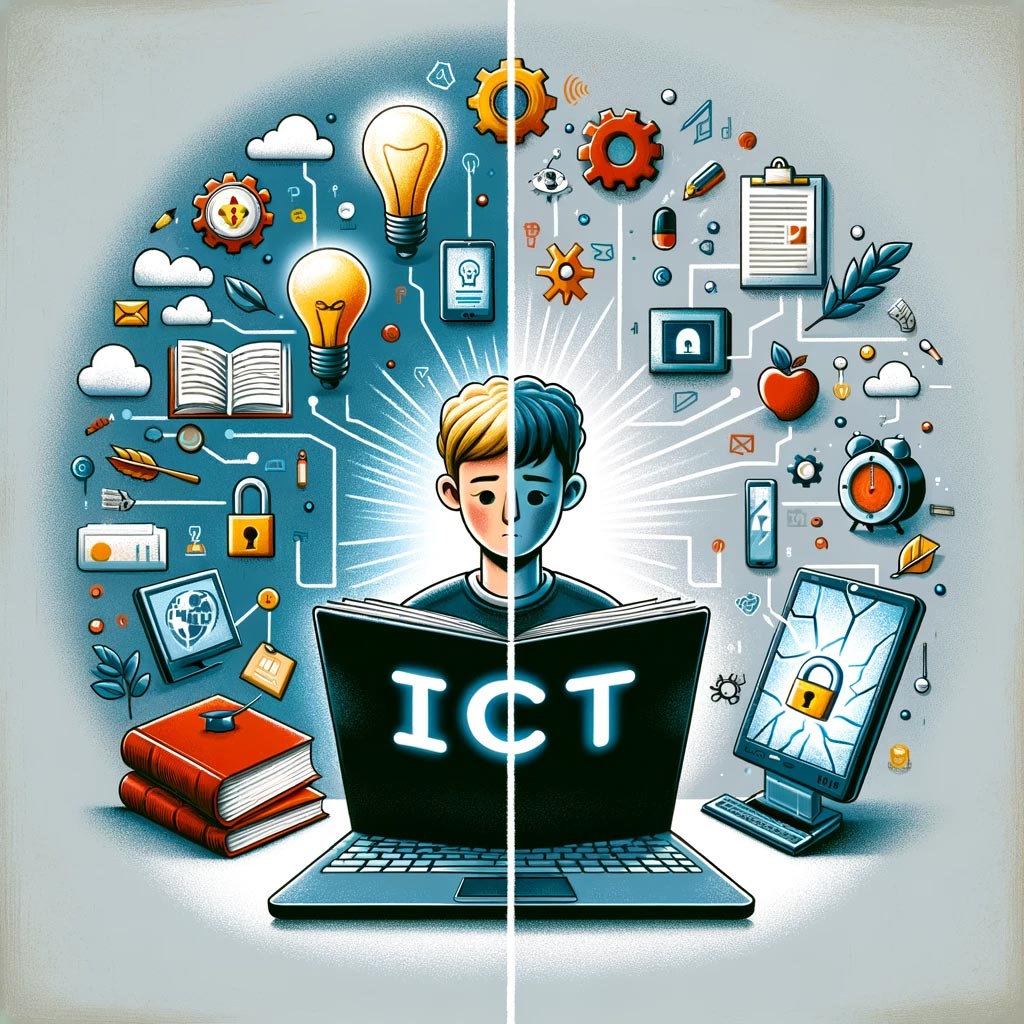
Advantages and Disadvantages of ICT for Students
In the contemporary educational landscape, Information and Communication Technology (ICT) has emerged as a cornerstone, reshaping how learning environments are structured and how educational content is delivered and consumed. This in-depth analysis seeks to unpack the multifaceted impacts of ICT in education, offering educators, students, policymakers, and educational technology providers a well-rounded perspective on the benefits and challenges associated with digital learning tools.
Introduction to ICT in Education
The integration of ICT in education refers to the use of digital technologies, including computers, internet platforms, software applications, and interactive whiteboards, to facilitate and enhance the learning experience. This approach has gained significant traction over the past decades, driven by advancements in technology and a growing recognition of the potential for digital tools to support educational objectives.
Current and Emerging ICT Tools in Education
A variety of ICT tools are currently in use across educational settings, ranging from Learning Management Systems (LMS) like Moodle and Blackboard, which allow for the administration, documentation, tracking, reporting, and delivery of educational courses or training programs, to interactive whiteboards that enable interactive teaching. Educational apps and digital literacy resources further complement these tools, offering students tailored learning experiences. Emerging technologies, such as artificial intelligence (AI) and virtual reality (VR), promise to add new dimensions to digital education by providing immersive learning experiences and personalized learning paths.
The Impact of ICT on Learning
The effectiveness of ICT in improving student outcomes is supported by a growing body of research. Statistical evidence suggests that when integrated effectively, ICT can enhance student engagement, improve access to information, foster collaboration among students, and facilitate differentiated instruction, thereby supporting diverse learning needs and styles.
Advantages of ICT in Education
Enhanced Learning Experiences
Digital learning tools provide dynamic and interactive learning experiences that can motivate and engage students more deeply than traditional methods. For example, virtual classrooms and educational apps offer multimedia content such as videos, animations, and simulations that make learning more vivid and engaging.
Accessibility and Flexibility
One of the key benefits of ICT in education is its ability to provide learners with access to educational resources anytime and anywhere, breaking down geographical and temporal barriers. Online learning platforms and digital libraries offer students the flexibility to learn at their own pace and according to their own schedules.
Preparation for the Digital Age
Integrating ICT into the curriculum helps prepare students for the digital economy, equipping them with essential digital literacy skills. In an age where digital proficiency is increasingly seen as critical to employability, education in ICT provides students with a competitive edge.
Disadvantages of ICT in Education
Digital Divide
Despite the benefits, the integration of ICT in education is not without challenges. A significant concern is the digital divide, which refers to the gap between individuals who have access to modern information and communication technologies and those who do not. This divide can exacerbate existing educational inequalities, as students without adequate access to technology or the internet at home may struggle to keep up with their peers.
Overreliance and Distraction
Another potential drawback of ICT is the risk of overreliance on technology, which can lead to a reduction in fundamental skills such as handwriting and mental arithmetic. Additionally, digital devices can be a source of distraction, with students potentially spending more time on non-educational activities when using computers or tablets.
Cybersecurity and Privacy Concerns
The increased use of digital tools in education also raises concerns about cybersecurity and the privacy of student data. Schools and educational institutions must navigate these challenges carefully, ensuring that personal information is protected and that students are safe from online threats.
Case Studies of Successful ICT Integration
Real-world examples of successful ICT integration in schools and universities underscore the transformative potential of these technologies. For instance, some institutions have adopted flipped classroom models, where students review lecture content at home through online platforms and engage in problem-solving activities in class, facilitated by interactive whiteboards. Such approaches have been shown to enhance student understanding and retention of material.
Future Trends in ICT for Education
Looking ahead, the landscape of ICT in education is set to evolve further, with AI and machine learning poised to offer more personalized learning experiences. Additionally, the integration of VR and augmented reality (AR) in educational settings is expected to grow, offering students immersive and interactive learning environments that were previously unimaginable.
Conclusion
The integration of Information and Communication Technology in education presents a compelling array of benefits, from enhanced learning experiences to improved accessibility and preparation for the digital economy. However, educators, policymakers, and the educational community at large must remain cognizant of the challenges, particularly the need to address the digital divide, ensure the development of foundational skills, and safeguard student privacy. By striking a balance between leveraging the advantages of ICT and mitigating its potential drawbacks, stakeholders can maximize the positive impact of technology on student learning outcomes, paving the way for a future where education is more engaging, inclusive, and effective.
ICT Information Technology Students





